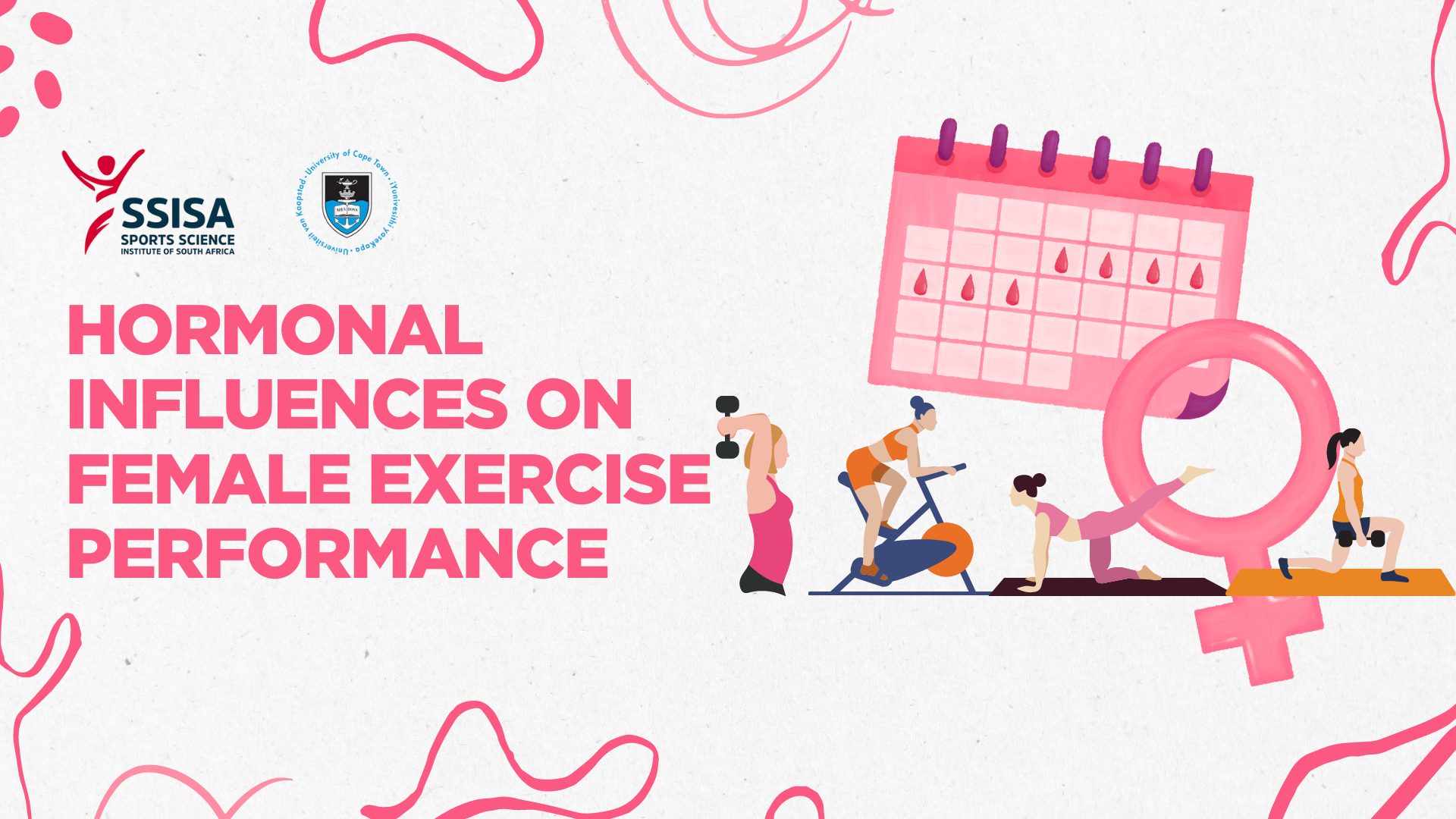The menstrual cycle consists of three distinct phases: the follicular phase, ovulation, and the luteal phase.
 Each of which is regulated by hormonal fluctuations, primarily oestrogen and progesterone (4). During the follicular phase (day 6 – 11 following menstruation), a follicle is maturing in preparation for release during ovulation. Oestrogen levels rise, contributing to increased vasodilation, improved blood flow, and enhanced oxygen delivery to muscles (3). Progesterone levels increase during the luteal phase of the menstrual cycle (day 15 – 28). This is the stage where the egg moves from the ovary through the fallopian tube and into the uterus. Progesterone can have a calming effect on the central nervous system and may impact thermoregulation, potentially affecting exercise performance (1).
Each of which is regulated by hormonal fluctuations, primarily oestrogen and progesterone (4). During the follicular phase (day 6 – 11 following menstruation), a follicle is maturing in preparation for release during ovulation. Oestrogen levels rise, contributing to increased vasodilation, improved blood flow, and enhanced oxygen delivery to muscles (3). Progesterone levels increase during the luteal phase of the menstrual cycle (day 15 – 28). This is the stage where the egg moves from the ovary through the fallopian tube and into the uterus. Progesterone can have a calming effect on the central nervous system and may impact thermoregulation, potentially affecting exercise performance (1).
Oestrogen plays a significant role in cardiovascular function. It promotes vasodilation, improves endothelial function, and enhances cardiac output, which could potentially improve exercise capacity and aerobic performance (2). In addition, hormonal fluctuations throughout the menstrual cycle can influence muscle strength and power. Research suggests that oestrogen may have an anabolic effect on muscle tissue, potentially enhancing muscle performance. However, the influence of hormonal fluctuations on muscle function is complex and requires further investigation (4). Both oestrogen and progesterone can impact metabolism and energy utilization during exercise. Oestrogen may affect substrate utilization, potentially enhancing fat oxidation and sparing muscle glycogen. Progesterone, on the other hand, may contribute to increased carbohydrate utilization (2).
What does this potentially mean for exercising throughout your menstrual cycle? Oestrogen has potentially positive effects on performance, causing an increase in blood flow, oxygen delivery, and fat metabolization, and it is at its highest between days 6 – 11, during the follicular phase. Progesterone has more of a calming effect which could benefit recovery between days 16 – 28, during the luteal phase.
Hormonal contraception (oral contraceptives & intrauterine devices) can alter hormonal profiles in women, primarily impacting oestrogen and progesterone levels, potentially affecting exercise performance (5). However, research on the effects of hormonal contraception on exercise is limited and inconclusive. Some studies suggest potential negative impacts on strength, power, and aerobic capacity (due to decreased oestrogen), while other studies report no significant differences. Further research is needed to understand the individual responses and implications (5). Anyone considering hormonal contraception should consult with healthcare professionals, as different types of contraception, side effects, & individual characteristics should be evaluated (5).
To bring you the most evidence-based and cutting information in the fields of sports and exercise science and health, SSISA works alongside the UCT Research Centre for Health through Physical Activity, Lifestyle and Sport (HPALS) to disseminate the latest research. HPALS research focuses on optimizing human performance and promoting health and well-being through physical activity, sports participation, healthy eating and good sleep hygiene. Their work begins at the DNA, to the human performance laboratory and ultimately to the community. To read more about the Health through Physical Activity, Lifestyle and Research Centre, Division of Physiological Sciences at the University of Cape Town, please see the HPALS website or email Ayesha Hendricks for more information about applications for BSc Honours/MSc/MPhil/PhD research programmes.
To get in touch with the Sports Science Institute of South Africa Group for Research Implementation and Translation (GRIT) Research Consultants, get in touch with Warren Lucas at grit@ssisa.com or call 021 650 5728 for enquiries. Read more about the SSISA GRIT Team here.
References:
- Elliott-Sale KJ, et al. Hormonal contraceptive use and bone health in elite athletes: a narrative review and practical recommendations. Sports Med. 2021;51(10):2109-2126.
- Oosthuyse T, Bosch AN. The effect of the menstrual cycle on exercise metabolism: implications for exercise performance in eumenorrhoeic women. Sports Med. 2010;40(3):207-227.
- Pivarnik JM, et al. Effects of menstrual cycle phase on athletic performance. Med Sci Sports Exerc. 1992;24(6):S125-S131.
- Wikström-Frisén L, et al. Effects of the menstrual cycle on muscle strength and power performance. J Strength Cond Res. 2017;31(9):2528-2537.
- Zarek SM, et al. Hormonal contraceptive use in athletes: implications for performance. Sports Med. 2014;44(7):S161-S172.


 Each of which is regulated by hormonal fluctuations, primarily oestrogen and progesterone (4). During the follicular phase (day 6 – 11 following menstruation), a follicle is maturing in preparation for release during ovulation. Oestrogen levels rise, contributing to increased vasodilation, improved blood flow, and enhanced oxygen delivery to muscles (3). Progesterone levels increase during the luteal phase of the menstrual cycle (day 15 – 28). This is the stage where the egg moves from the ovary through the fallopian tube and into the uterus. Progesterone can have a calming effect on the central nervous system and may impact thermoregulation, potentially affecting exercise performance (1).
Each of which is regulated by hormonal fluctuations, primarily oestrogen and progesterone (4). During the follicular phase (day 6 – 11 following menstruation), a follicle is maturing in preparation for release during ovulation. Oestrogen levels rise, contributing to increased vasodilation, improved blood flow, and enhanced oxygen delivery to muscles (3). Progesterone levels increase during the luteal phase of the menstrual cycle (day 15 – 28). This is the stage where the egg moves from the ovary through the fallopian tube and into the uterus. Progesterone can have a calming effect on the central nervous system and may impact thermoregulation, potentially affecting exercise performance (1).